How To Repair Space Around Chimney Flue Vent Pipe
Chimney damp is a common and abrasive problem. We regularly get questions hither at Permagard almost what's causing damp patches around a chimney and how to stop it.
In this guide we look at the signs, potential causes and fixes of a damp chimney.
Signs of chimney damp
Common symptoms of chimney damp are similar to regular clammy only will be isolated solely around the fireplace or chimney breast. Signs include:
- Yellow or brown marks on the walls
- Damp patches that come up and go as the weather changes
- Flaking pigment
- Rising damp tidemark
These signs can be evident, downstairs effectually the breast, in the above room and the attic.
Visual chimney clammy problems are usually like shooting fish in a barrel to identify, however finding the cause of the clammy is often more difficult.
Ladder safe
In order to thoroughly check your chimney and edifice to find the root cause of the problem, this may involve the use of a ladder. You should only use ladders in situations where it is safe to exercise then and you accept the necessary preparation to safely complete the job. If you practice not feel 100% confident or don't have another person to supervise and steady the ladder, we would always recommend hiring a trained professional to carry out the investigation/survey on your behalf.
Causes of chimney damp
Chimney damp is normally acquired, diagnosed and fixed in a like fashion to other damp issues. Nevertheless, chimneys can experience another additional potential damp causes.
As always, the cause of the chimney damp needs to exist addressed before damp proofing can begin. Your checks will have to be thorough as in some situations information technology tin be a little hard to spot. Remember there can also be more than one cause.
The visual signs of chimney damp can provide a good indication of where to start looking for the cause.
Damp caused by chimney stack bug
Called-for coal and woods releases tars and salts that then settle into the chimneys of older homes. When this process occurs over decades, it tin cause unsightly chimney damp.
Open or broken chimney pots
The start thing to identify is whether your chimney pots are open-topped or capped. If they are open-topped and your chimney is not in apply information technology's possible that rain or moisture is entering through the opening and causing damp in your chimney. If your chimney is capped, examine the cap for signs of damage.
In the example of open up or damaged chimney pots, add together a chimney cowl or cap to protect the stack from letting in moisture. It is important that you do not seal your chimney at the top, whether the chimney is in use or not as you want to encourage air catamenia.
Inadequate chimney stack ventilation
We ofttimes become asked 'can a blocked chimney crusade damp'? The reply is yep, especially if in that location is little or no ventilation.
If your chimney is blocked up and is capped and sealed at the elevation, the lack of ventilation could exist causing chimney condensation to build up in the void, pregnant that when your house warms up, condensation collects and forms damp on the chimney breast surface.
It is important that unused chimneys are vented at both the height and the bottom, to allow a constant flow of air. At the top, the all-time option is to fit a terra cotta cowl or elevated cap to the chimney pot, which keeps the rain out but allows the air to enter. In the room below, it is necessary to accept chimney vent installed but below ceiling height.
Cracked chimney stack mortar
If you have both capped chimney pots and sufficient ventilation, next check for whatever cracks in the pointing of the chimney stack. Damaged pointing allows water and moisture to enter the stack and will rapidly cause clammy in the chimney. If this is the example, the chimney stack and surrounding brickwork will demand to be repointed earlier the damp event can exist resolved.
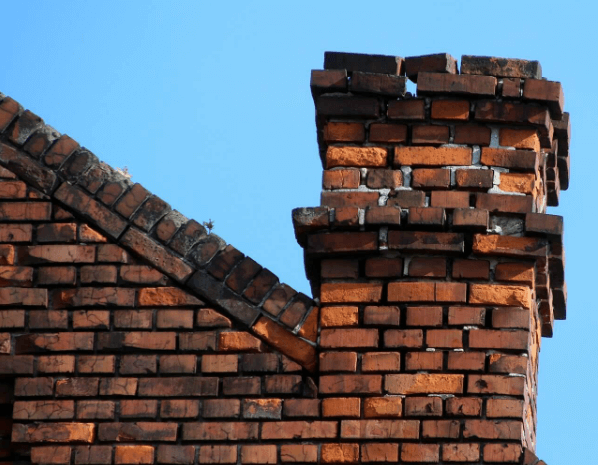
Shared chimney
If you share a chimney with your neighbor it is possible that recent home renovations, such as the installation of a wood burner may exist causing clammy in your domicile due to poor chimney flue installation or inadequate ventilation. The best style to identify this problem is to speak to your neighbours. This may get a problem for them in time to come too then the earliest this outcome can be identified the better, for both parties.
Building faults that can cause chimney damp
Damp patches on the chimney breast, brown or yellow marks on the walls and ceilings surrounding the chimney often signal to impairment caused by a h2o leak or building faults such as inadequate guttering, missing roof tiles, poor flashing details and absorbent masonry. More on this later.
Later checking the chimney itself, the side by side port of telephone call is to assess the surrounding area. Equally moisture travels from wet to dry areas, the source of the chimney damp doesn't necessarily need to be on the stack itself.
Penetrating damp
Chimneys on older properties have been exposed to the weather condition for a long time. This tin pb to a degradation of the brickwork and also the mortar joints often making them more absorbent or fifty-fifty cracked leading to water ingress to the chimney leading to damp getting in and possibly tracking to internal surfaces.
If penetrating damp has been diagnosed as the source of damp the chimney needs to exist checked and repaired where necessary then to stop the farther ingress of h2o we recommend the awarding of a masonry water repellent to the whole exposed chimney to prevent water ingress which will protect the area from the effects of weathering for a practiced period of time, if Microshield Ultra is used this could be 25 years upwards.
Weak or croaky atomic number 82 flashing
Used to seal joints, ensure you check the flashing around the chimney stack for whatsoever impairment. This is best identified from within the attic or roof space. Wait for signs of daylight coming in around the stack also every bit any signs of h2o leakage or a build-up of hygroscopic salts; all of these bespeak to weak or cracked lead flashing.
Flashing will need to be repaired or replaced before clammy proofing the chimney tin begin. Either rent a professional or, if y'all feel confident, utilise DIY flashing tape such as No Nonsense Flashing Tape to repair the damage.
Damaged or missing roof tiles
Examine your roof for broken or missing tiles – call up to bank check your unabridged roof and not only the surrounding chimney stack area. Any defective tiles will need to exist replaced to ensure that your home is protected from the elements.
Broken or blocked gutters
Cleaved or blocked gutters permit h2o to collect in unwanted areas and enter through any cracks in the mortar causing numerous damp and structural bug throughout the home, including chimney damp. This problem can exist fixed past cleaning, replacing or moving guttering and so that downpipes bleed away from the property.
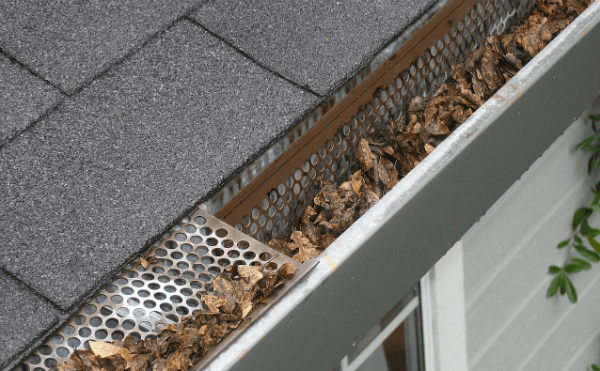
Chimney damp acquired by ascent damp
If you lot take stains and damp marks around the base of the chimney chest, no more 1.5m high and table salt tidemark, then this could propose rising damp caused by a bridged damp proof course (DPC) or lack of DPC. If you doubtable rising damp explore the possible causes below.
Damaged chimney clammy proof course
It is non unusual for older properties to be built without a chimney DPC, we've even seen new or replacement chimney harths installed without a DPC beneath it leading to rising damp. If you don't have a chimney DPC, moisture in the damp ground beneath your chimney can rising upwardly the stack.
The all-time way to resolve this problem is by inserting a chemical DPC into the base of your chimney.
Bridged clammy proof course
If you have a DPC, then check the area for anything that could be bridging the DPC for example renders/ finishes peradventure droppings in cavity walls. If any of these symptoms are visible then simply removing them can terminate the effect in its runway then its a case of making good the effected areas.
How to stop chimney clammy
Y'all must always remedy the cause of the damp before then making proficient, nonetheless virtually of the time when dealing with clammy chimneys you will need to address hygroscopic salts that volition be within the masonry, render and finishing plaster. Even if the source of the damp has been fixed these hygroscopic salts can remain in situ and with high humidity absorb moisture from the air making the surface look clammy. This can pb to the abode owner to call back the issue has non been resolved.
Therefore it is important that the salt contamination problem is dealt with by removing the salt contaminated plaster and return is removed and one of the below damp proofing methods is employed.
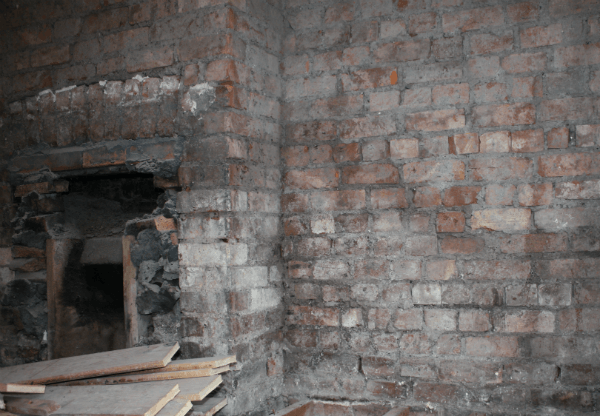
Damp proofing chimney stack
There are a few options when damp proofing a chimney, all options require the removal of the render back to the exposed brick chimney chest. If ascent clammy is determined equally your problem, you will but need to remove the render upwards to 1m minimum or 300mm above the last sign of clammy. Our two near popular solutions are below.
Damp proof membrane
The first option is to install a meshed damp proof membrane to the chimney breast. Applying a DPM directly over the area isolates the salty background from the new finish. Membranes such as the PermaSEAL and Platon membrane can be installed direct abroad meaning a drastically reduced project time.
Once the membrane has been installed you can and so either dot and dab or render direct over it.
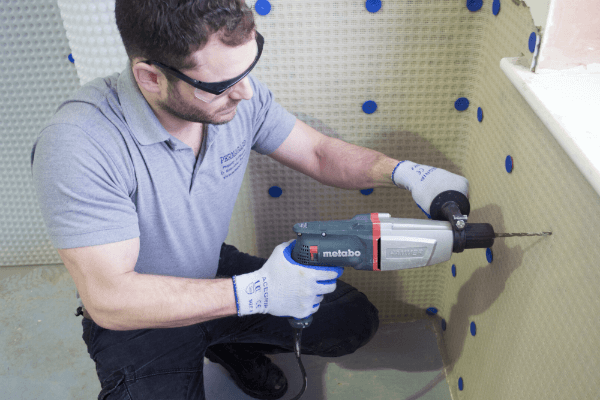
Curing Chimney Clammy with PermaSEAL
The second pick is to prime and reseal the area using our PermaSEAL clammy proofing range.
Firstly prime the area with PermaSEAL Common salt Inhibitor then, whilst clammy, apply two coats of PermaSEAL Tanking to the area equally per the data sheet and so apply a minimum 10mm coat of PermaSEAL Renovating Plaster over the surface to grade a table salt-resistant barrier. Finally, skim over with Multi Finish Plaster.
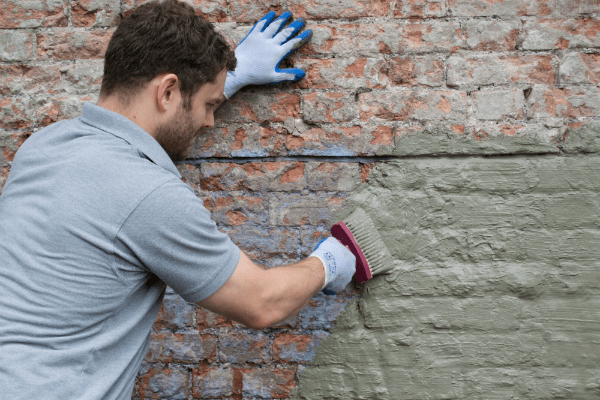
Source: https://www.permagard.co.uk/advice/fix-damp-chimney-breast
Posted by: mouserresichey.blogspot.com


0 Response to "How To Repair Space Around Chimney Flue Vent Pipe"
Post a Comment